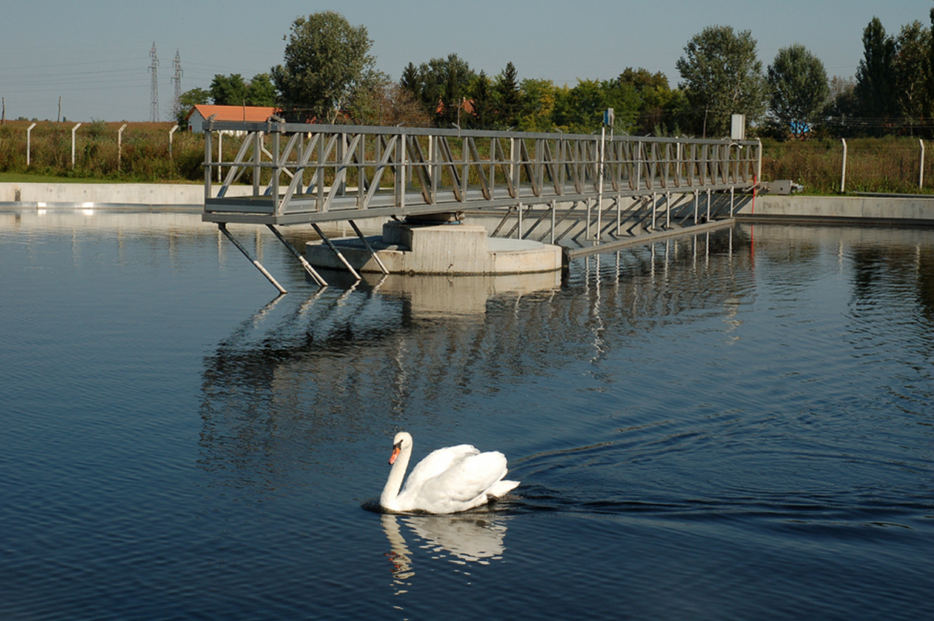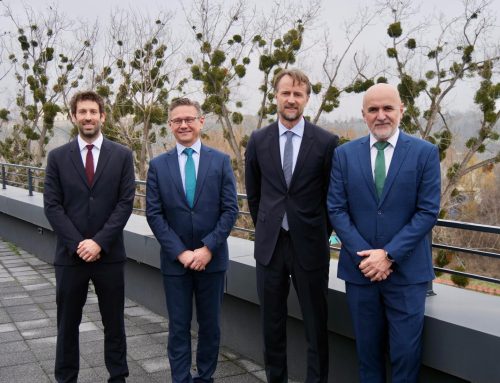Serbia’s northern city of Subotica is now equipped with a modern water and wastewater network and facilities thanks to a decade-long engineering endeavour supported by the European Bank for Reconstruction and Development (EBRD), the European Union (EU) and bilateral donors under the Western Balkans Investment Framework (WBIF).
The new network improves the quality of water supply, wastewater disposal and treatment services in Subotica. It also allows the city with a population of 140,000 to connect around 12,000 more citizens to the sewerage network, bringing coverage up to 60 per cent of the population.
The improved wastewater treatment system also prevents the pollution of Lake Palić, one of the top five tourist destinations in Serbia and located on the outskirts of Subotica.
In addition, the new system has the technological capacity to produce energy from waste and currently produces 25 to 40 per cent of its total energy needs.
The new infrastructure makes Subotica one of the first cities in Serbia with modern water and wastewater infrastructure in line with EU standards. It is estimated that only around 10 per cent of wastewater in Serbia is treated and only around 46 per cent of the population is connected to the sewerage system. In many cases, the existing infrastructure is also outdated and in need of investment.
The completion of the project was marked with a stakeholders’ visit today to the new water treatment plant, which will improve water supply and ensure sufficient quantities of quality drinking water.
The EBRD, the EU and bilateral donors have supported Subotica since 2010 when the city started modernising its wastewater treatment plant and constructing a sludge line. The city then continued to upgrade its network by extending its sewerage network and constructing collectors and additional water pipelines, among other things.
 The EBRD provided close to €20 million in loans, while the EU and bilateral donors provided €7million worth of investment grants and technical assistance.
The EBRD provided close to €20 million in loans, while the EU and bilateral donors provided €7million worth of investment grants and technical assistance.
Zsuzsanna Hargitai, EBRD Regional Director, Western Balkans and Head of Serbia, said: “We hope to see more cities in Serbia follow the example of Subotica and invest in their wastewater and water infrastructure. The EBRD, the European Union as well as bilateral donor countries are focused on supporting the transition to a green economy and there has never been stronger momentum to invest in green infrastructure. It is an opportunity not to be missed in order to upgrade networks of cities and municipalities to the benefit of citizens and the environment.”
Martin Klaucke, Operations Section at the EU Delegation to Serbia„ said: “This is another milestone for Serbia to become greener and to protect its citizens and foster a brighter future. Subotica is, of course, only one area in Serbia where we have invested in water purification. In the Raška area, for instance, we have also invested more than €6 million in a wastewater treatment plant. European integration for Serbia is not an abstract thing; it is something people can see and feel in their own homes through cleaner and safer water for them and their children. Protecting the environment means protecting the people. That is what the EU is about: a better life for the people.”

The EBRD is a leading institutional investor in Serbia. The Bank has invested more than €6.3 billion across 277 projects in the country to date. The EBRD is focusing on support for private-sector development, the improvement of public utility services and on the overall transition towards a green economy.




